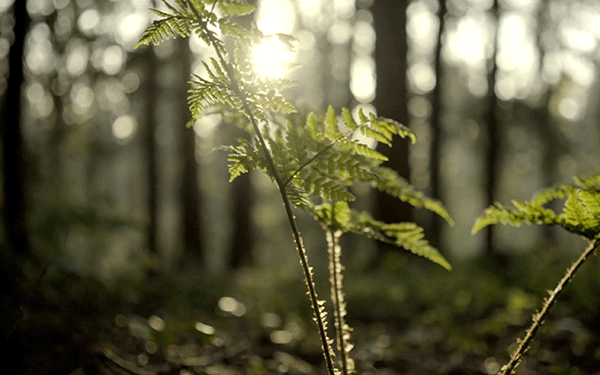Writing this while sat in front of a wood-fired range, watching the frost melt outside in the morning sun, I am experiencing what some might call smugness.
The Scandinavians, with their better acceptance of winter and of human pleasures, call it ‘hygge’: a self-hugging sense of security and convivial well-being.
But tradition, and a hyggish pride in the scale and order of my log pile, may not be the best environmental guides. My heating, cooking, and hot water are all wood fired, using fallen, seasoned wood from our hedges and woods.
I love the rhythm and immediacy of tending the stoves – but this is not the solution for an over-populated planet. Although theoretically carbon neutral, there can be no doubt that even with dry wood and efficient stoves, the resulting particulate pollution is a serious health issue, certainly in urban areas.
There is also an argument for leaving at least some fallen wood to decay naturally, providing habitat and food sources for birds and insects. The best wood should be used for timber, thus locking up the carbon contained within the wood for longer, and displacing steel.

An efficient heat pump is probably a greener solution in most cases – especially if we manage to decarbonise the National Grid by 2035, as many predict.
Nevertheless, when this newsletter is written, my inbox is empty and my head is ready to explode, I will push the keyboard aside and head out to Tor wood with chainsaw and axe, ready to cut and split the 20 tonnes of logs we use each winter.
Tragically, the prevalence of ash dieback (a fungal disease) means there is no shortage of fallen trees. Counting the 100 or so rings of the larger tree butts suggests that this wood was cleared for pit props and trench timbers, as so many were during World War One, when wood cover fell to five per cent in Britain.
The random spacing, even age, and prevalence of ash suggest that the wood was then left to regenerate naturally during the agricultural depression of the 1920s and 30s.
The 60-foot trees started dying five years ago. As the canopy thins, we are planting beech, sycamore, chestnut, and hazel underneath.
This was once our best wood for wild garlic, but as light levels increase below the ailing trees, garlic, primroses and bluebells are being replaced by the more light-hungry and competitive nettles and brambles.
I won’t live to see the mixed canopy we have planted grow up to replace the ash, but it makes me feel better about taking the fallen wood now.













Interestingly, the scare stories about wood burners polluting urban cities stem from a fuel crisis in Greece in 2012 when everyone went out and bought wood burners, which then led to a shortage of suitable wood. City dwellers chucked anything that would burn on their new wood burners in order to stay warm; wet wood, treated wood; all the things that are illegal to sell as firewood in the UK. But still the noise about urban pollution rings in our ears… and it is completely out of context. Raise your glass of organic red wine and toast your toes in front of your fire and don’t be feeling guilty. You are not burning fossil fuel but yes, there is always i improvements to be made… all in good time.
Again – it is human stupidity that makes the problems…! Many people get a woodburner and then just pick up any wood based thing they see and burn it – often wood impregnated with glues, paints and stains…. they also expect to be able to cut down a tree and burn it the same day…! I live in a rural area and have neighbours like this! – its not just townies…! Whatever we do in life we need to educate ourselves to the best way to do it – how to make it environmentally sound, ethical and with little or no harm caused….
You would really think we would of learned by now….!
We can only educate those who chose to be educated, ignorance is bliss as they say, but sometimes also convenient.
I disagree.
Alongside vehicle pollution ( tyres, brakes, fuel – particularly diesel) urban wood-burners are not good.
https://www.breeze-technologies.de/blog/what-is-temperature-inversion-and-how-does-it-exacerbate-smog/
https://www.theguardian.com/environment/2020/dec/18/wood-burners-triple-harmful-indoor-air-pollution-study-finds
https://www.theguardian.com/environment/2021/feb/16/home-wood-burning-biggest-cause-particle-pollution-fires#:~:text=The%20new%20government%20statistics%20show,for%20which%20data%20is%20available.
Re the above article…ASHPs are good when accompanied by full insulation – walls, floors, roofs – as near to a passivhaus condition as can be achieved. This is highly unlikely from a retrofit. Secondly, where’s the space for tanks and larger radiators? Thirdly, PH is a skill-set to be learnt – would folk, whose main aim in life is convenience be bothered? ( excuse my cynicism).
In the town I live in there is a new estate of 380+ dwellings to be built – a proportion of those are ‘affordable’ ( I’ll put the issue of ‘affordables’ to one side unless anyone wants to take it up). These will be terraced houses and blocks of low-rise flats ( or should I call them apartments?). That makes 380+ gas central heating boilers.
The developer will not put alternatives in because they are not compelled to by the National Planning Policy Framework as set out by central government – and a drain on the profitability. Whatever local government views are are not taken into account.
So, the use of community heating schemes are ignored; the innovative use of PV with batteries and infra-red panels etc, for example, is ignored at a second fix stage and it will be up to those who buy as homeowners to decide what to do ..and some might use heat pumps, but what a bloody waste of time , money and resources in the name of short-term profit and a lack of future-proofing .
In some places (Taff’s Well in Wales) they are starting to use the heat from hot wells etc to power homes and businesses – but really – why would we not of done it before…..? In the same way we had free unlimited power from thousands of mills on our rivers (yes – some problems with how it was done – re nature/labour) but we threw it all away – like we did the canals,,,, and the railways…. short sighted profit-motivated……grumble, fume!!!!